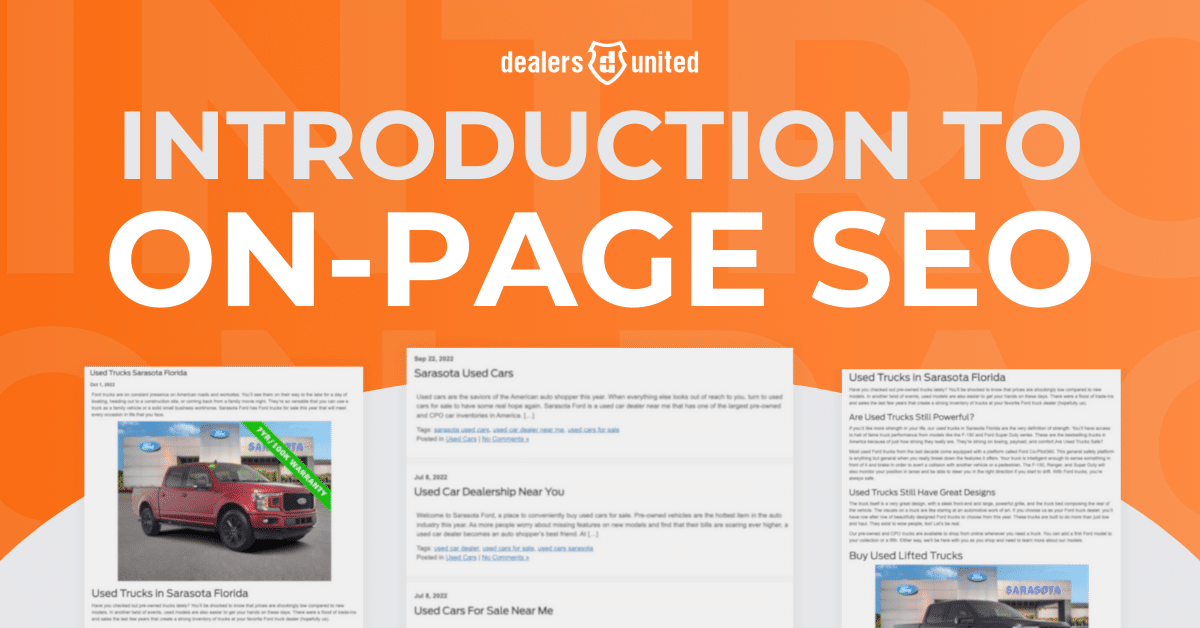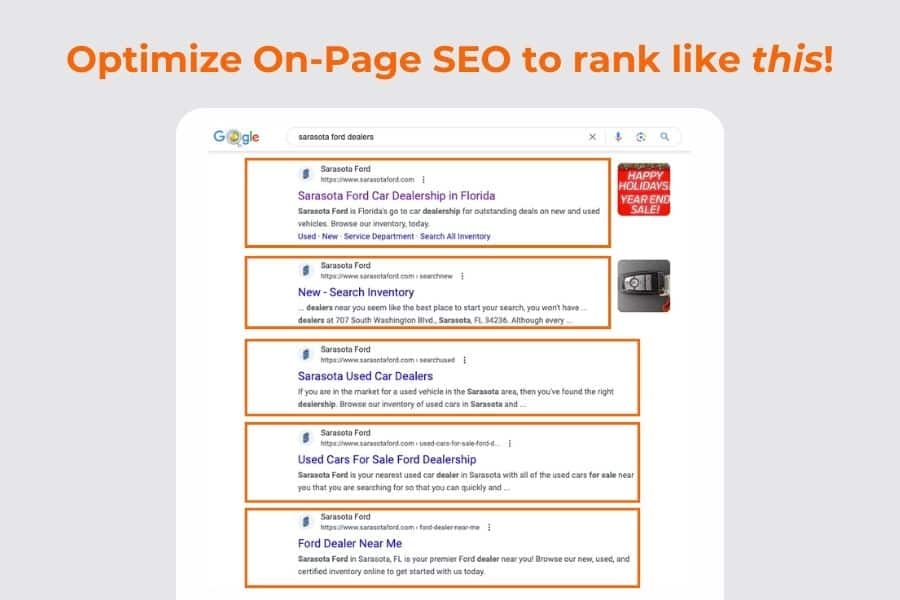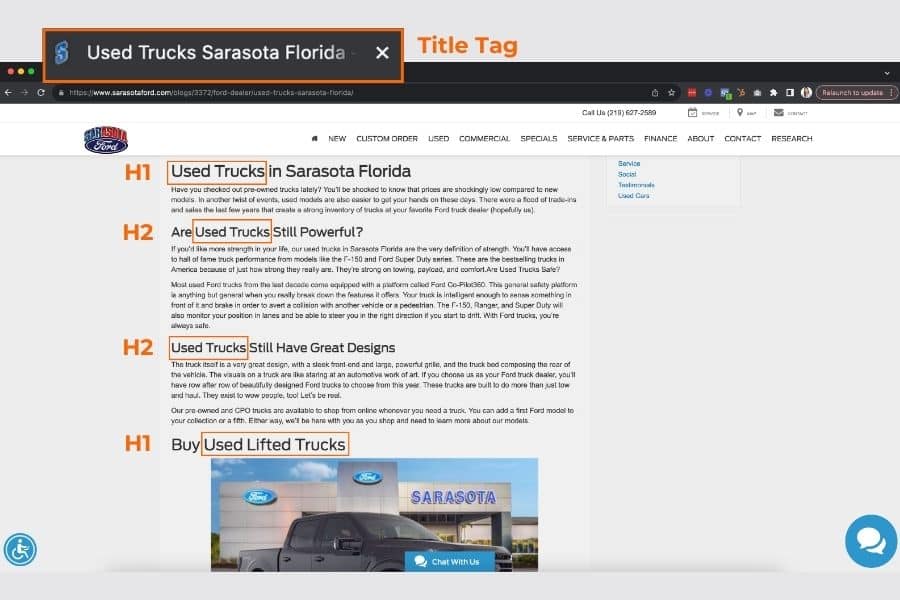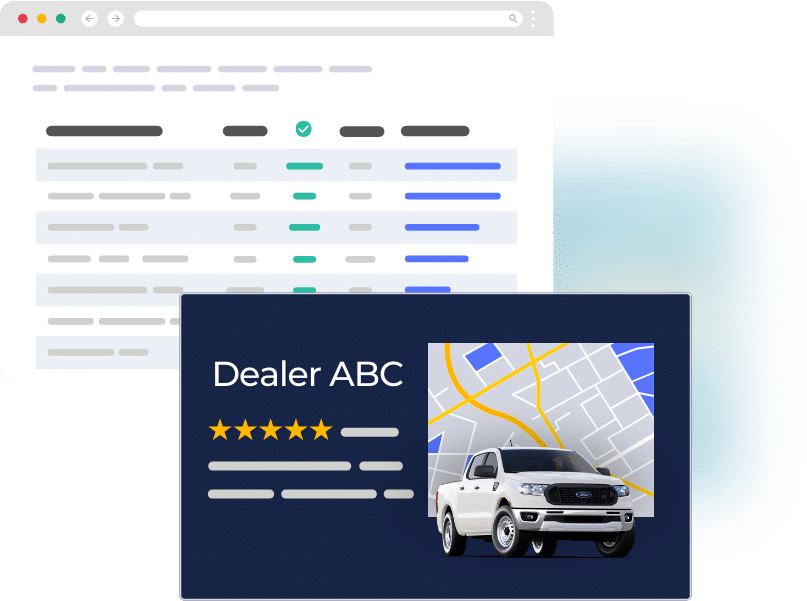Introduction to On-Page SEO for Dealerships

On-page SEO refers to optimizations made directly on a dealership’s website to improve its rankings in search engines like Google. As opposed to off-page SEO which focuses on building links and earning citations, on-page SEO focuses directly on the content, structure, and HTML of each page.
Implementing strong on-page SEO is crucial for dealerships who want to rank well organically. And when done properly…it helps search engines understand what your page is about and further determine if it’s a good “fit” for search queries.
Dealers United has SEO Experts ready to help you implement strong on-page SEO. Learn more about how Dealers United can help your dealership with SEO here.
Why On-Page SEO Matters
There are a few key reasons why on-page SEO is important for car dealerships:
- It helps search bots crawl and index pages correctly – with proper headings, metadata, etc
- It conveys relevance and authority signals to ranking algorithms
- It improves click-through-rates (CTRs) from search results by presenting pages properly
- It enhances user experience and satisfaction
Optimizing on-page factors helps pages rank better for targeted keywords. The higher that pages rank in search engines, the more traffic and leads they’ll convert!
Key Elements of On-Page SEO
Many on-page SEO factors should be optimized, but these are some of the most important and should be on the top of your list:
Title Tags
The title tag appears at the top of browsers and is vital for click-through rate. Title tags should:
- Accurately describe the page’s content
- Use strategic keywords where appropriate
- Be under 60 characters
Headings Tags (H1, H2, H3)
Heading tags break up content into logical sections and establish page hierarchy. They should:
- Highlight important content sections
- Incorporate primary and secondary keywords
- Not have large gaps in the heading hierarchy
Content
The content itself must be optimized with users and search engines in mind.
- Focus on creating useful, information-rich content above all else
- Seamlessly integrate primary and secondary keywords within content
- Include relevant media like videos or images when appropriate
- Create long-form content over 2,000 words when possible
Alt Text & Image Names
Alt text provides description for images unable to be displayed. Image names help search bots understand images’ content.
- Describe all images captions clearly and concisely
- Use relevant keywords appropriately
Links & Anchor Text
Links allow bots to crawl pages deeply and efficiently. Anchor text indicates what pages you link to are about.
- Link out to authority resources appropriately
- Use descriptive anchor text with keywords
By optimizing these elements holistically, you’ll convey relevance to search engines while improving user experience. Get these on-page SEO basics right before diving into more advanced tactics.
Common On-Page SEO Mistakes
While optimizing on-page factors, many sub-optimal practices also slip through the cracks. Be vigilant to avoid:
- Over-optimizing with keywords – Let content flow naturally
- Using <i> tags for emphasis – Use proper heading tags instead
- Going overboard with internal links – Links should occur organically
- Missing alt text and image names -Describe all images
- Thin or duplicate content – Create useful, original content
Optimizing properly takes a nuanced approach. Use best practices without over-engineering or distracting from user experience and quality content.
Conclusion
Implementing strong on-page SEO requires optimizing many granular factors from title tags to heading hierarchy, media elements to internal linking patterns. While technical at times, the focus should remain on crafting exceptional content above all else.
If the user experience isn’t there, search engines will penalize pages regardless of keywords stuffed throughout. By optimizing on-page factors holistically, you convey maximum relevance signals while engaging visitors. Approach on-page SEO as adding a layer of optimization on top of great content.





